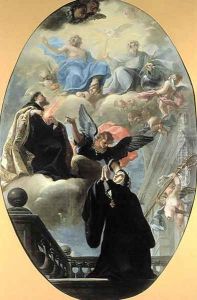Isidoro Arredondo Paintings
Isidoro Arredondo was a Spanish painter born in the year 1695, during the Baroque period, a time characterized by dramatic expression and grandeur in the arts. He is considered one of the lesser-known artists of the Spanish Baroque, and much of his life remains obscure, with limited documentation regarding his training and personal life.
Arredondo's work was predominantly influenced by the prevailing artistic trends of the time, particularly those of the Spanish Baroque, which was part of a larger European movement. The Baroque style in Spain was distinct, often infused with a strong sense of religious fervor, as Spain was a staunchly Catholic country. This was reflected in the art of the period, which was used as a means to inspire the faithful and was often characterized by intense emotionality and a dynamic interplay of light and shadow, known as chiaroscuro.
Despite the scarcity of information about Arredondo’s life, it is believed that he worked mainly in Madrid and was active during the early to mid-18th century. His works would have included religious subjects, as was common among his contemporaries, with likely commissions for churches and religious institutions. His paintings would have been characterized by the dramatic use of light, rich colors, and a focus on the emotional states of his subjects, aligning with the Baroque aesthetic of the time.
Arredondo passed away in 1752, and while his legacy may not be as well-known as some of his contemporaries, his contributions would have been part of the rich tapestry of Spanish Baroque art. His works, like those of many artists of the era, would have served both an aesthetic function and a didactic role, teaching and reinforcing the principles of the Catholic faith through visual storytelling.
